The Presbytère is a historic building in the French Quarter of New Orleans. Originally built for the clergy, it is now part of the Louisiana State Museum, which has two exhibits here: one on the colorful Mardi Gras, and another on the Hurricanes that often afflict the area.
The Building
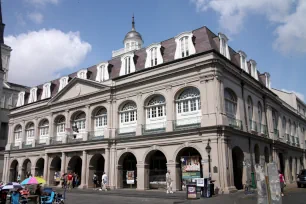
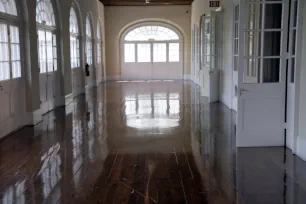
After the great fire of 1788 had destroyed much of the center of New Orleans, reconstruction started quickly. At Jackson Square three prominent buildings were constructed: the Cabildo, the St. Louis Cathedral and the Presbytère.
Funds for those new buildings were provided by Don Andres Almonaster y Rojas, an immigrant from Spain who became one of the city’s wealthiest citizens. The building of the Presbytère started first, in 1791, but its construction was postponed after the Great Fire of 1794, when priority was given to the completion of the Cabildo and the cathedral.
The Presbytère was only completed in 1813. In 1848 the mansard roof that we see now replaced the original flat roof. The building was designed by Gilberto Guillemard, who was also responsible for the mirroring Cabildo on the other side of the cathedral.
The Presbytère
The Presbytère was originally known as the Casa Curial and was intended as the living quarters for the cathedral’s clergy. Hence the current name, which stems from the French word Presbytère (presbytery). It was however never used as such.
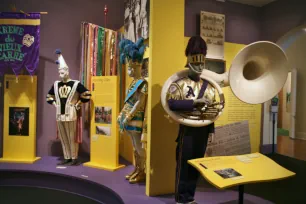
Don Almonaster died in 1798 and the new American government, who completed the building, decided to move part of the state courts here. In 1911 the Presbytère became part of the Louisiana State Museum, which now uses the building to display its Mardi Gras and Hurricane exhibits.
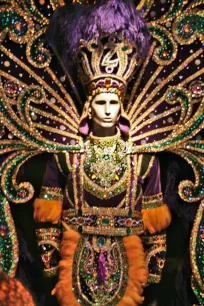
Mardi Gras Museum
The upper floor of the Presbytère houses an exhibition dedicated to Mardi Gras, New Orleans’s version of a European Carnival. The exhibition, dubbed “It’s Carnival Time in Louisiana”, showcases some of the extraordinary costumes that are worn at the parades of Mardi Gras. The elaborate costumes are often decorated with feathers, beads and gems and completed with conspicuous accessories such as tiaras and scepters.
Visitors will get a chance to learn more about the history of Mardi Gras, through videos, photos, posters, costumes and other artifacts, from its roots in Europe and Africa over the nineteenth century costumed balls to the spectacular parades of today.
There’s also an exhibit called Courir du Mardi Gras, which focuses on Mardi Gras in rural areas, where the festivities are very similar to those that were held in medieval Europe.
Hurricane Museum
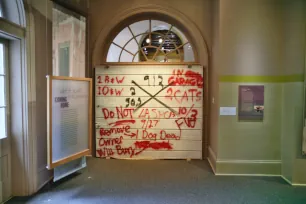
The lower floor of the Presbytère is home to an exhibition called Living with “Hurricanes: Katrina and Beyond”, which gives a chilling testimony of the devastation and subsequent lawlessness caused by Hurricane Katrina.
Photos, video and artifacts give visitors an insight in the history of hurricanes and flooding in New Orleans, and explains why Hurricane Katrina caused so much destruction. It also shows, through images and video footage, the buildup of the hurricane and the response of local citizens and authorities to the resulting catastrophe.

